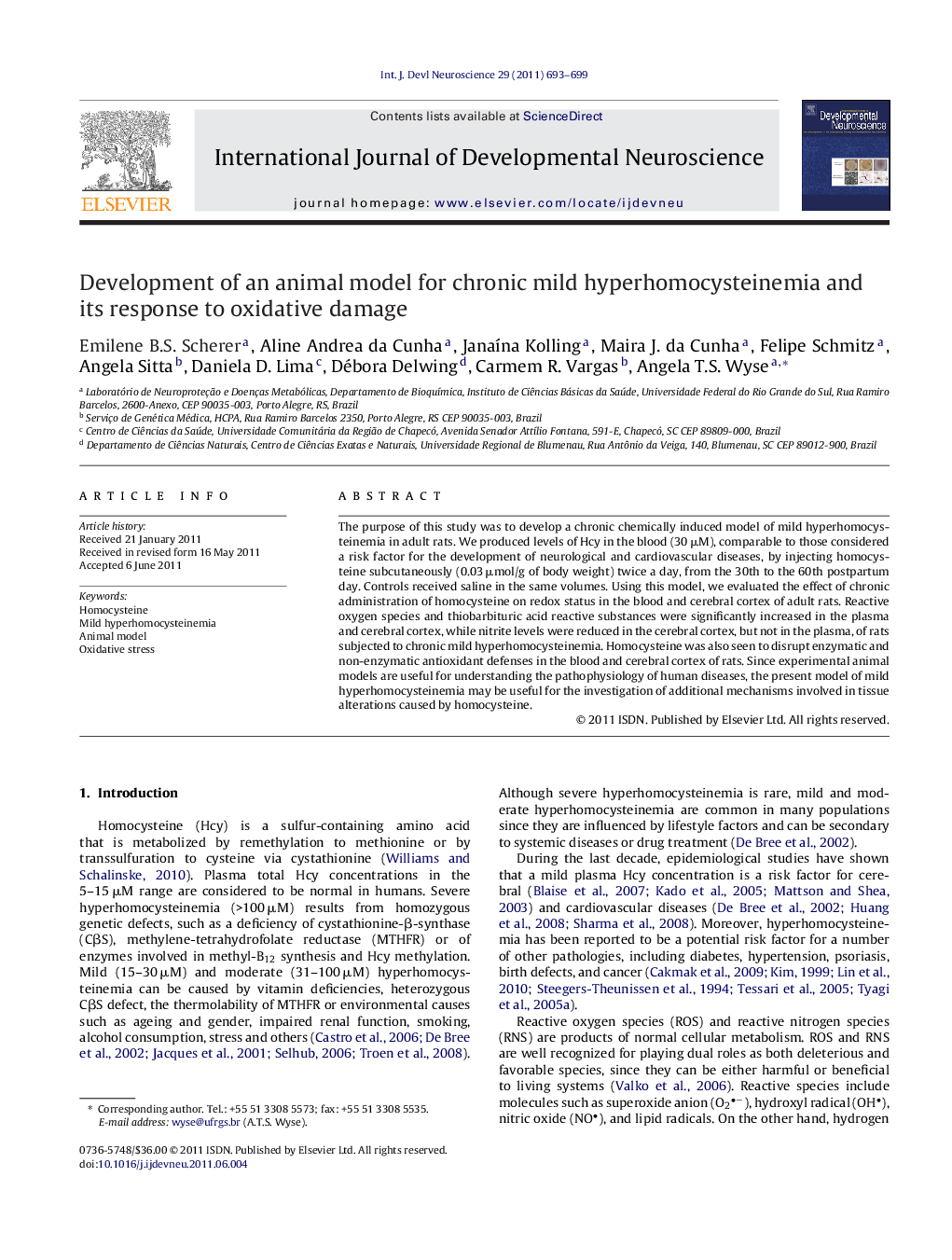| Article ID | Journal | Published Year | Pages | File Type |
|---|---|---|---|---|
| 2786451 | International Journal of Developmental Neuroscience | 2011 | 7 Pages |
The purpose of this study was to develop a chronic chemically induced model of mild hyperhomocysteinemia in adult rats. We produced levels of Hcy in the blood (30 μM), comparable to those considered a risk factor for the development of neurological and cardiovascular diseases, by injecting homocysteine subcutaneously (0.03 μmol/g of body weight) twice a day, from the 30th to the 60th postpartum day. Controls received saline in the same volumes. Using this model, we evaluated the effect of chronic administration of homocysteine on redox status in the blood and cerebral cortex of adult rats. Reactive oxygen species and thiobarbituric acid reactive substances were significantly increased in the plasma and cerebral cortex, while nitrite levels were reduced in the cerebral cortex, but not in the plasma, of rats subjected to chronic mild hyperhomocysteinemia. Homocysteine was also seen to disrupt enzymatic and non-enzymatic antioxidant defenses in the blood and cerebral cortex of rats. Since experimental animal models are useful for understanding the pathophysiology of human diseases, the present model of mild hyperhomocysteinemia may be useful for the investigation of additional mechanisms involved in tissue alterations caused by homocysteine.
• Development of an experimental model chronic mild hyperhomocysteineimia in adult rats. • Plasma homocysteine levels were approximately 30 μM. • Rats subjected to mild hyperhomocysteinemia present an induction of oxidative stress in blood and cerebral cortex.
